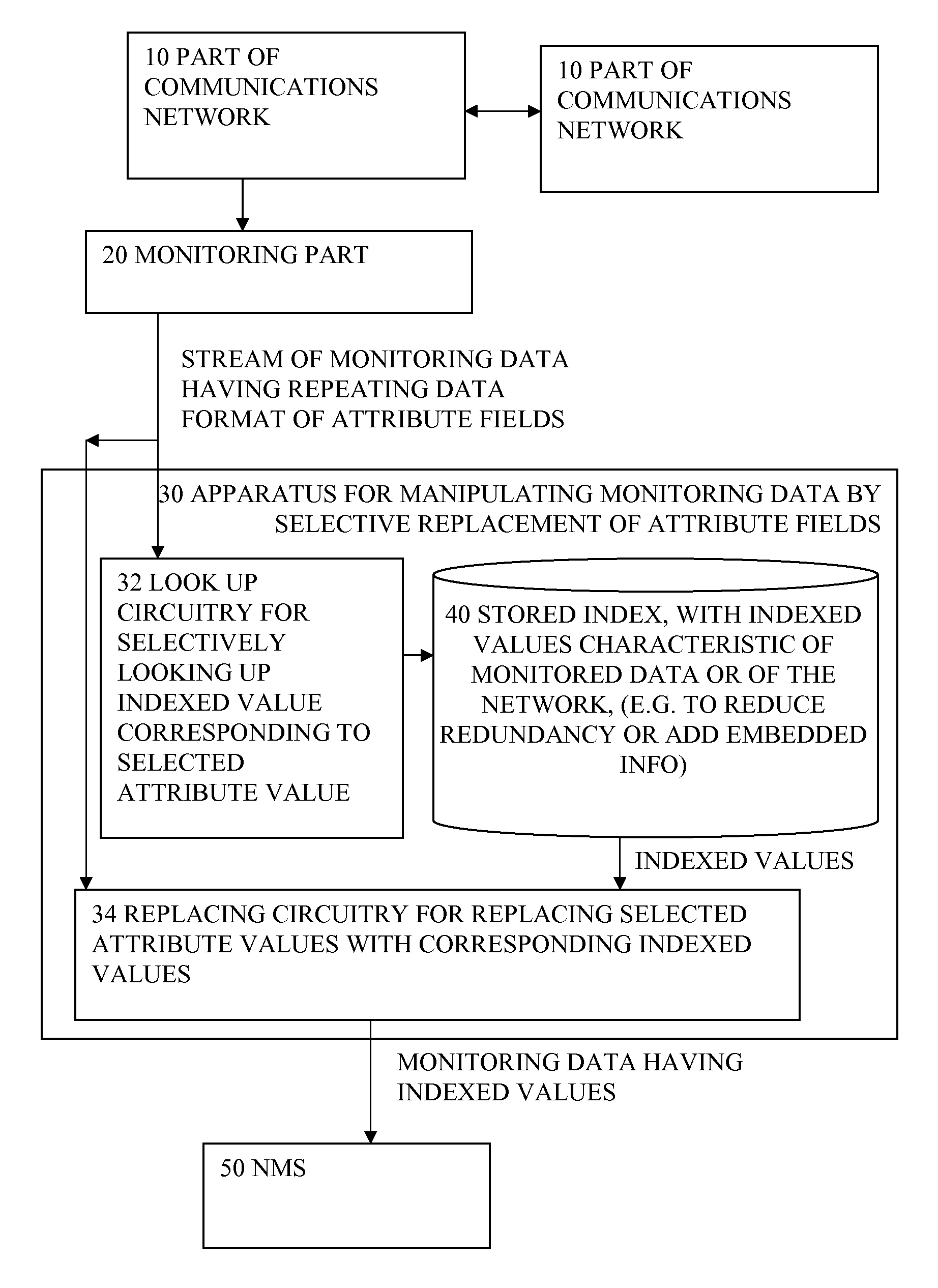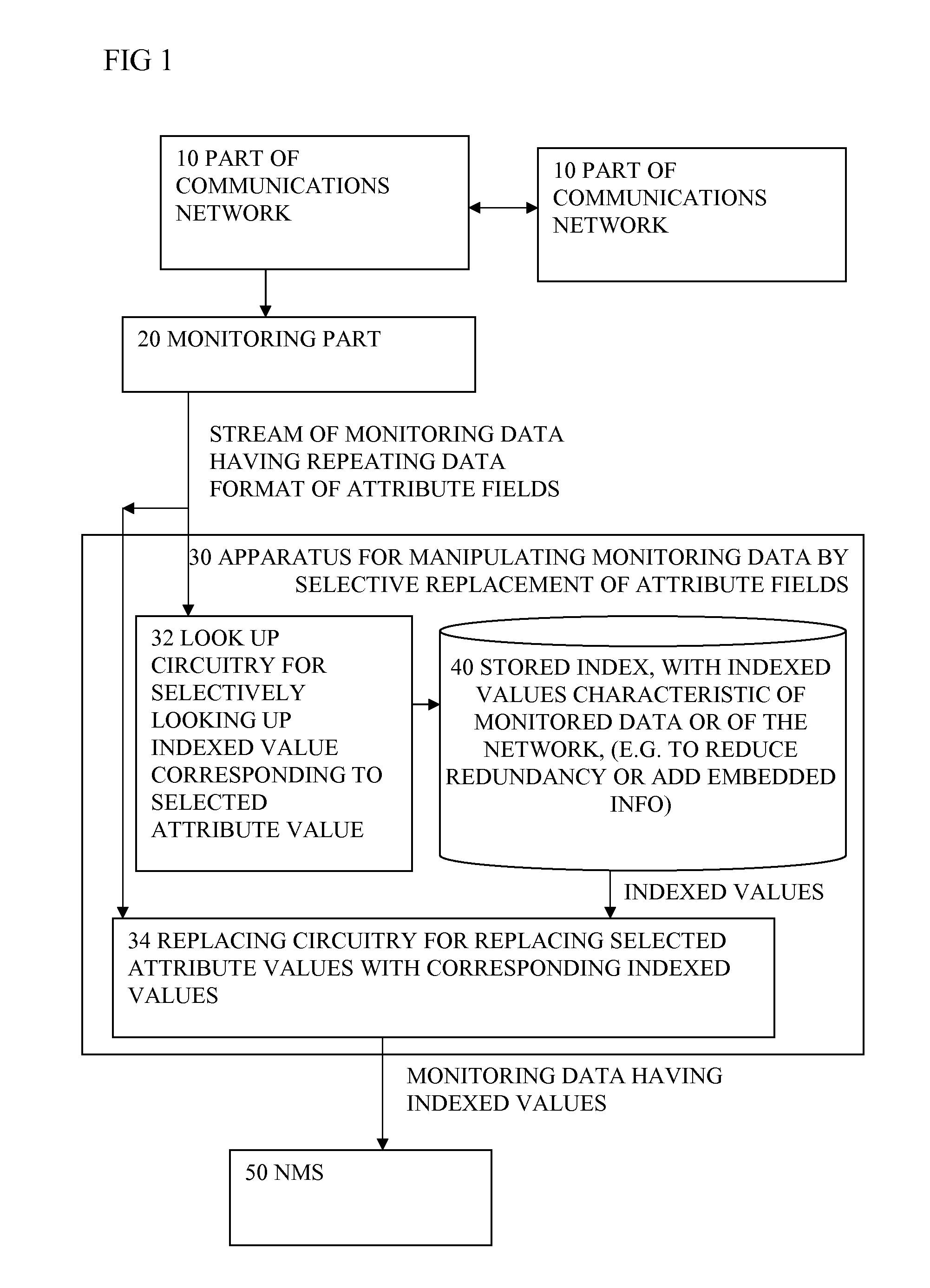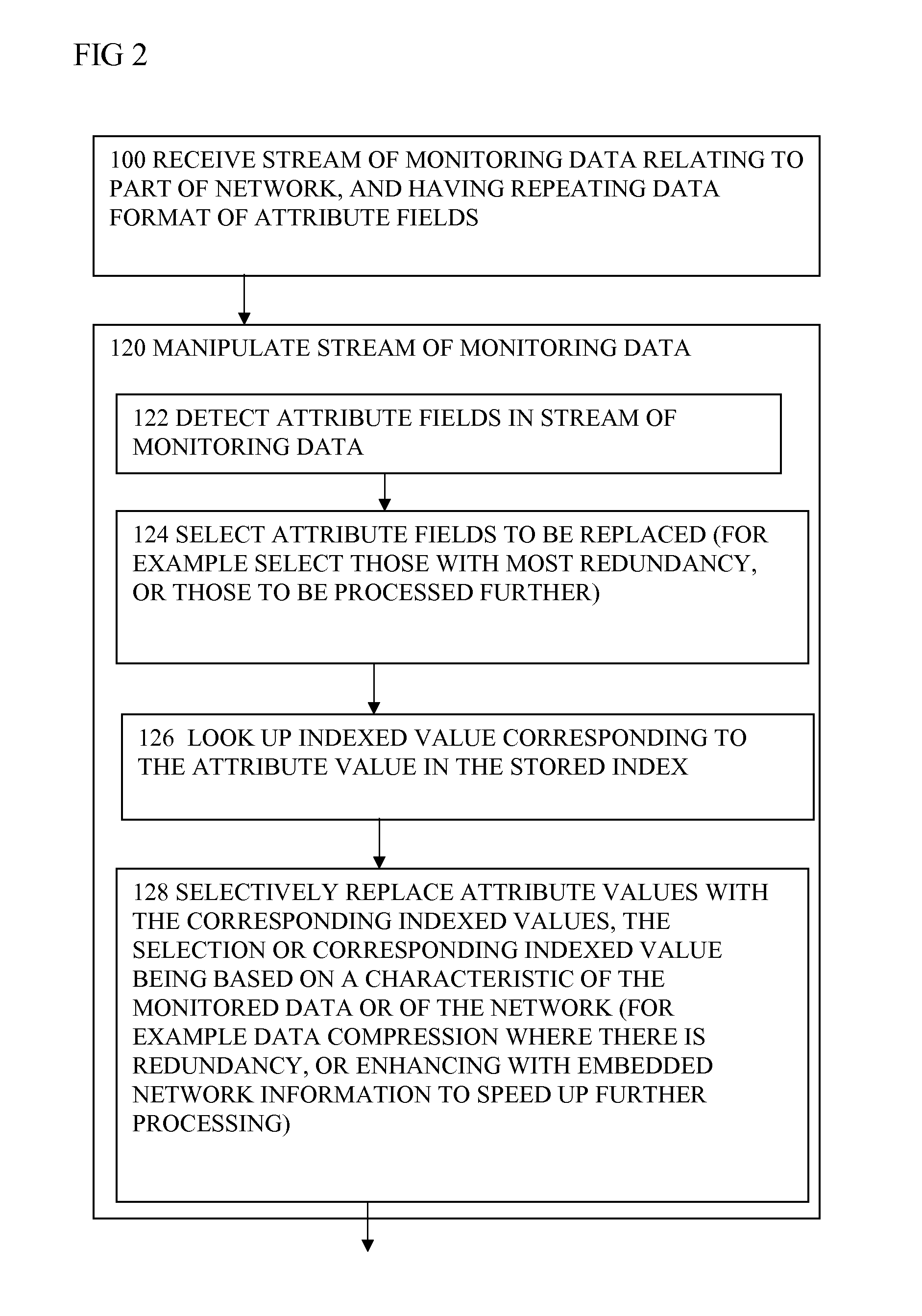Contextual information dramatically increases the size of an event, while real-time transmission and
processing of events poses stringent requirements on the capacity of both networks and systems.
Low event /
data rate per
stream but potentially very high after aggregation; event /
data rate per stream is low, typically 10 k-100 k bps; however, aggregated event /
data rate can be as high as
Gigabit bps, which poses significant challenges in event processing and forwarding;
Considering the high event rate, such lookup / correlation operations would significantly increase overhead on CPU and disk / DB I / O, which slows the performance of the whole
system.
Another drawback of this solution is that it only applies to a single
event stream and cannot remove redundancy across multiple event streams.
Data compression can only reduce redundancy inside the data block to be transmitted.
It cannot
handle redundancy across multiple event blocks, or across multiple event streams.
The major problem of applying such redundancy
elimination to
event based realtime monitoring is its cost on storage and processing.
The
standard algorithms for such fine scale redundancy are very expensive in memory (i.e. caching of data that have been seen) and processing especially for continuous event streams originated from nodes like MMEs or CPGs, potentially with very high event rates.
(1) A large storage is not feasible or cost-effective for a network node.
(2)
Processing overhead in redundancy identification may have a major
impact on node performance.
This would introduce high processing overhead for
network management applications, considering the volume of aggregate event traffic.
One reason for this is that finding top-K attribute values may consume considerable resources.
With extremely high aggregate event rate, this may consume significant
system resources.
This is not feasible or at least expensive to implement in the presence of high event rates.
(1) Plug-in based implementation: the redundancy analysis (and replacement of attribute values with indices) can be implemented as plug-ins of the encoding process of the events. Before events are written into binary blocks, the original values of each attribute are examined by the redundancy analyzer and replaced with indices if the indices exist in the indices table.
(2) Middle-box implementation: alternatively, some or all of the proposed operations can be done in a separate middle box. This may introduce extra cost but with little
impact on existing systems.
(3) Sender initiated redundancy
elimination: the proposed solution in previous sections assumes that the
network management applications carry out redundancy analysis and build indices. Alternatively, these operations may be carried out by event senders, i.e. network nodes. The generated indices need to be sent to the
network management applications. Indices from different nodes may be merged.
(4) Event re-construction: the proposed solution doesn't require events to be re-constructed at the
receiver side. That is, the
receiver may keep the received events at they are, without replacing the indices back with original values. This may further reduce the size of the storage required for the same amount of events, since the indices are much smaller in length than the original values. Accordingly,
SQL queries need to be looked up in the indices table before executed onto the stored events.
(5) Hardware implementation of event processing based on indices: a hardware based processing solution is particularly suitable because of the following benefits: Firstly, indices can be used to remove differences between lengths of attribute values; that is, all attribute values of a field or of an event can have equal lengths. This can reduce the complexity of using
CAM or TCAM (http: / / en.wikipedia.org / wiki / Content-addressable_memory) in event processing.
Secondly, indices contain all required information for the analysis. There is no need to carry out further memory accesses and searches for such correlation operations.
 Login to View More
Login to View More  Login to View More
Login to View More 


